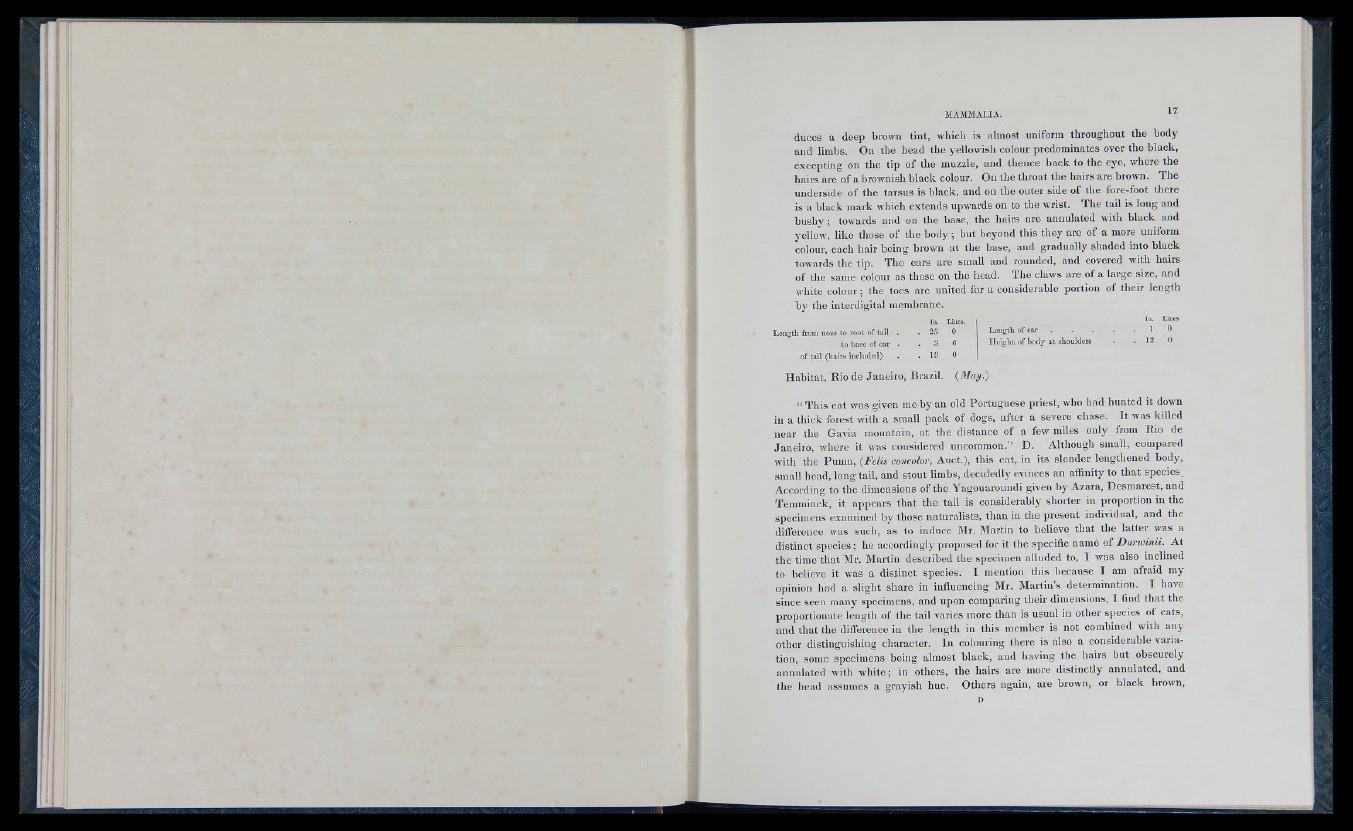
duces a deep brown tint, which is almost uniform throughout the body
and limbs. On the head the yellowish colour predominates over the black,
excepting on the tip of the muzzle, and thence back to the eye, where the
hairs are of a brownish black colour. On the throat the hairs are brown. The
underside of the tarsns is black, and on the outer side of the fore-foot there
is a black mark which extends upwards on to the wrist. The tail is long and
bushy; towards and on the base, the hairs are annulated with black and
yellow, like those of the body; but beyond this they are of a more uniform
colour, each hair being brown at the base, and gradually shaded into black
towards the tip. The ears are small and rounded, and covered with hairs
of the same colour as those on the head. The claws are of a large size, and
white colour; the toes are united for a considerable portion of their length
by the interdigital membrane.
In. Lines.
25 0
3 6
19 0
Lengtli of ear .
H eight of body at shoulders
Lines
Length from nose to root of tail 0
to base of ear
of tail (hairs included)
Habitat, Rio de Janeiro, Brazil. (May.)
“ This cat was given me by an old Portuguese priest, who had hunted it down
in a thick forest with a small pack of dogs, after a severe chase. It was killed
near the Gavia mountain, at the distance of a few miles only from Rio de
Janeiro, where it was considered, uncommon.” D . Although small, compared
with the Puma, (Felis concolor, Auct.), this cat, in its slender lengthened body,
small head, long tail, and stout limbs, decidedly evinces an affinity to that species.
According to the dimensions of the Yagouaroundi given by Azara, Desmarest, and
Temminck, it appears that the tail is considerably shorter in proportion in the
specimens examined by those naturalists, than in the present individual, and the
difference was such, as to induce Mr. Martin to believe that the latter was a
distinct species; he accordingly proposed for it the specific name of Darivinii. At
the time that Mr. Martin described the specimen alluded to, I was also inclined
to believe it was a distinct species. I mention this because I am afraid my
opinion had a sliglit share in influencing Mr. Martin’s determination. I have
since seen many specimens, and upon comparing their dimensions, I find that the
proportionate length of the tail varies more than is usual in other species of cats,
and that the difiereuce iu the length in this member is not combined with any
other distinguishing character. In colouring there is also a considerable variation,
some specimens being almost black, and having the hairs but obscurely
annulated with white; in others, the hairs are more distinctly annulated, and
the bead assumes a grayish hue. Others again, are brown, or black brown,
D